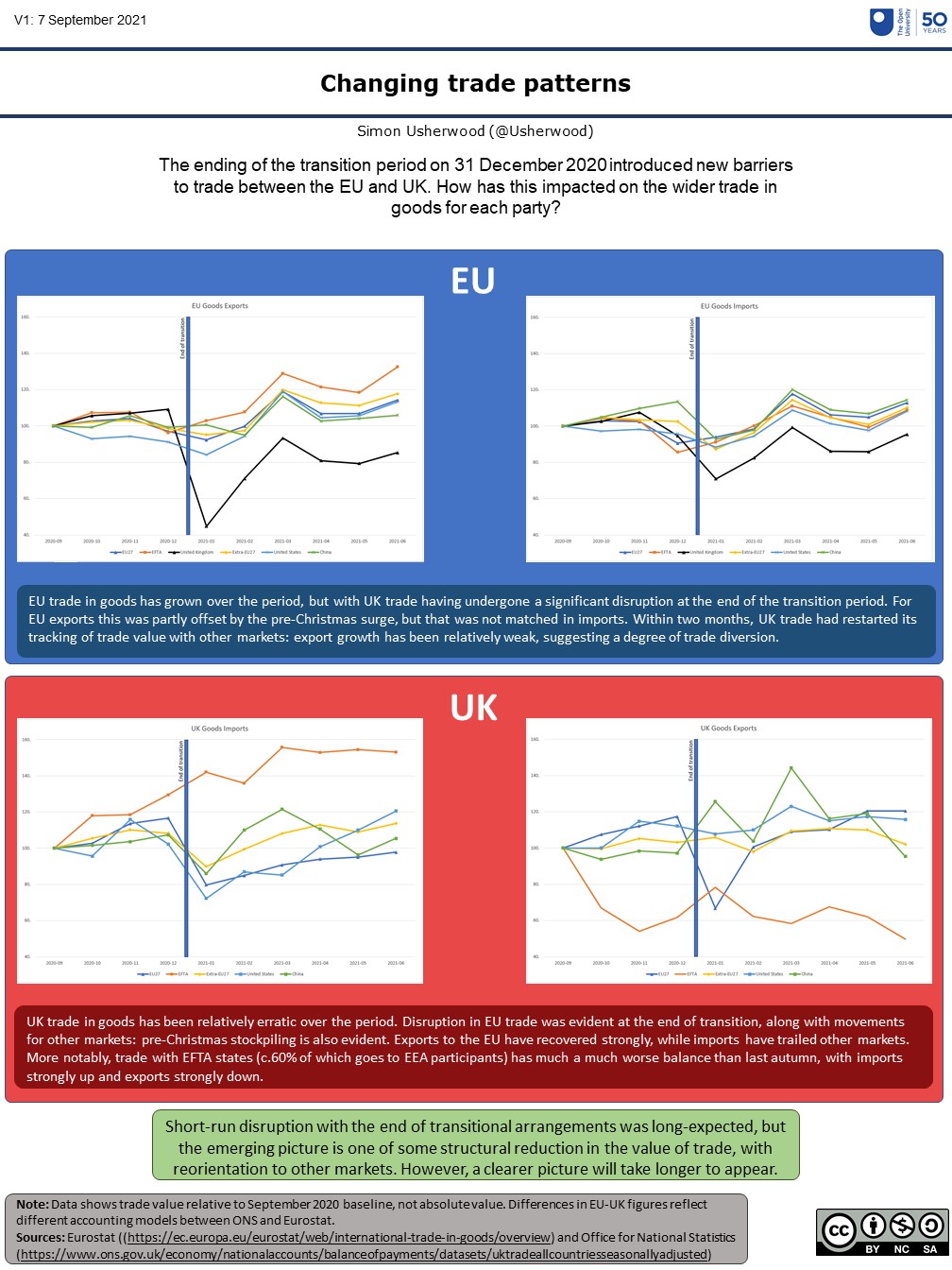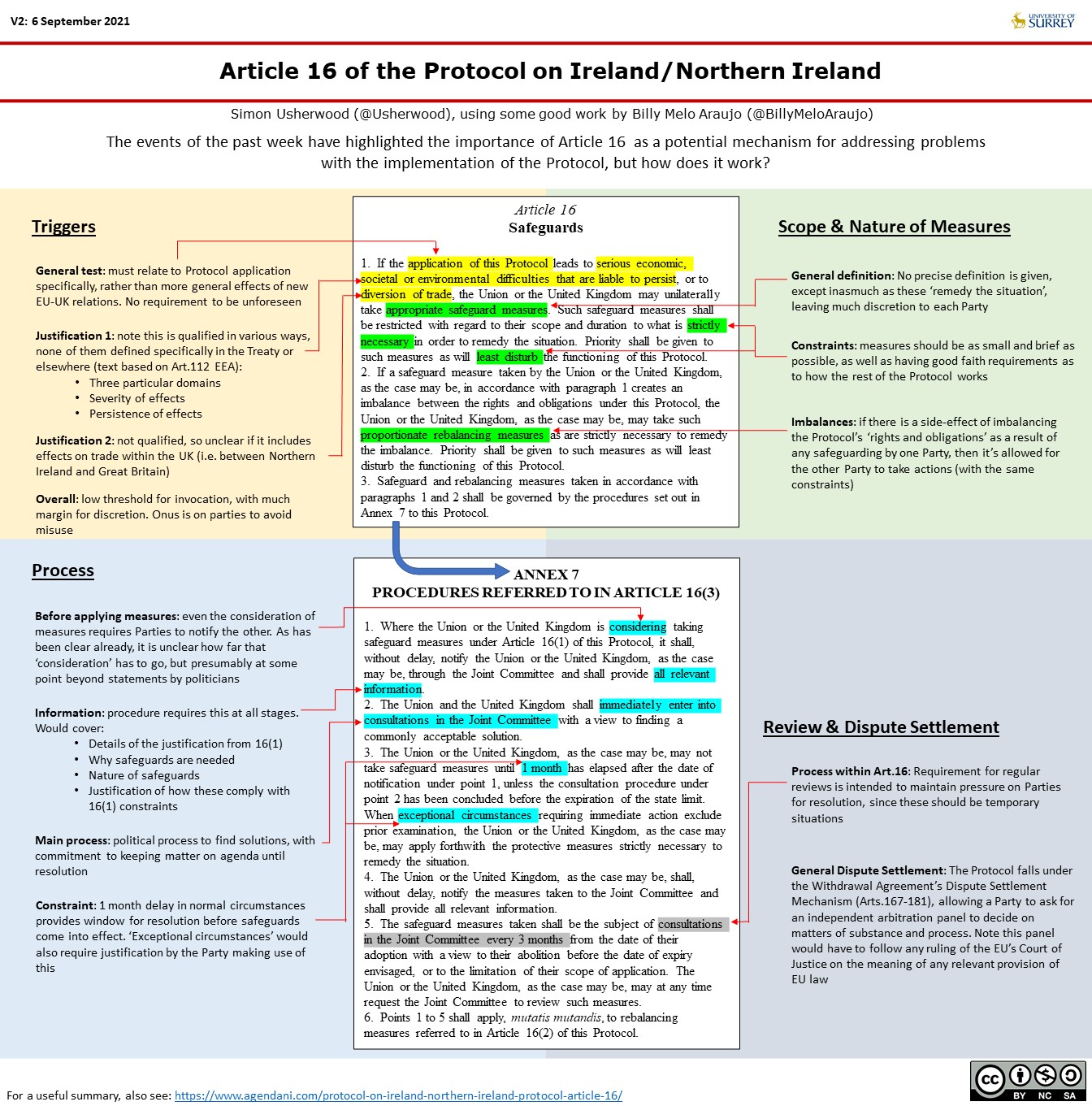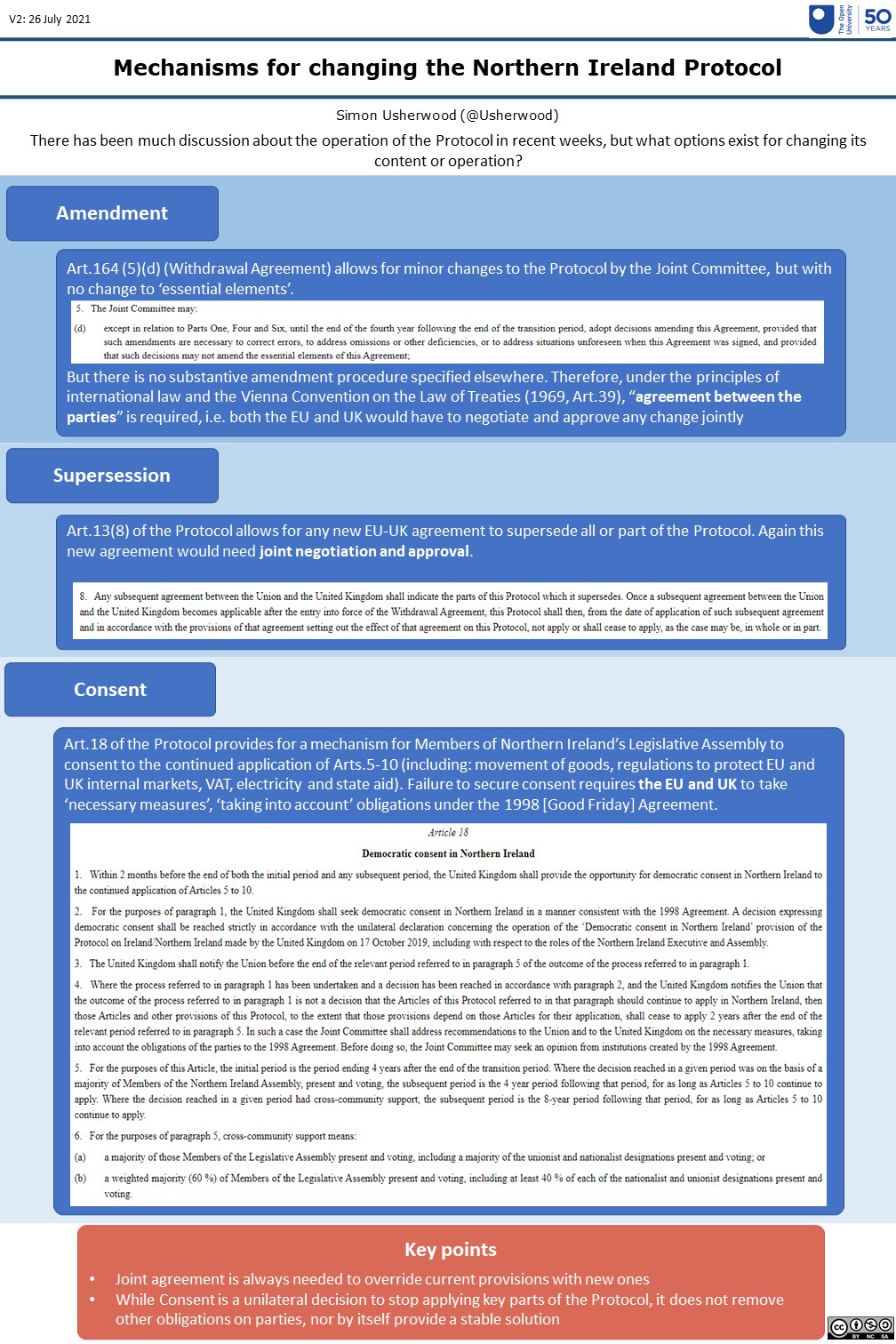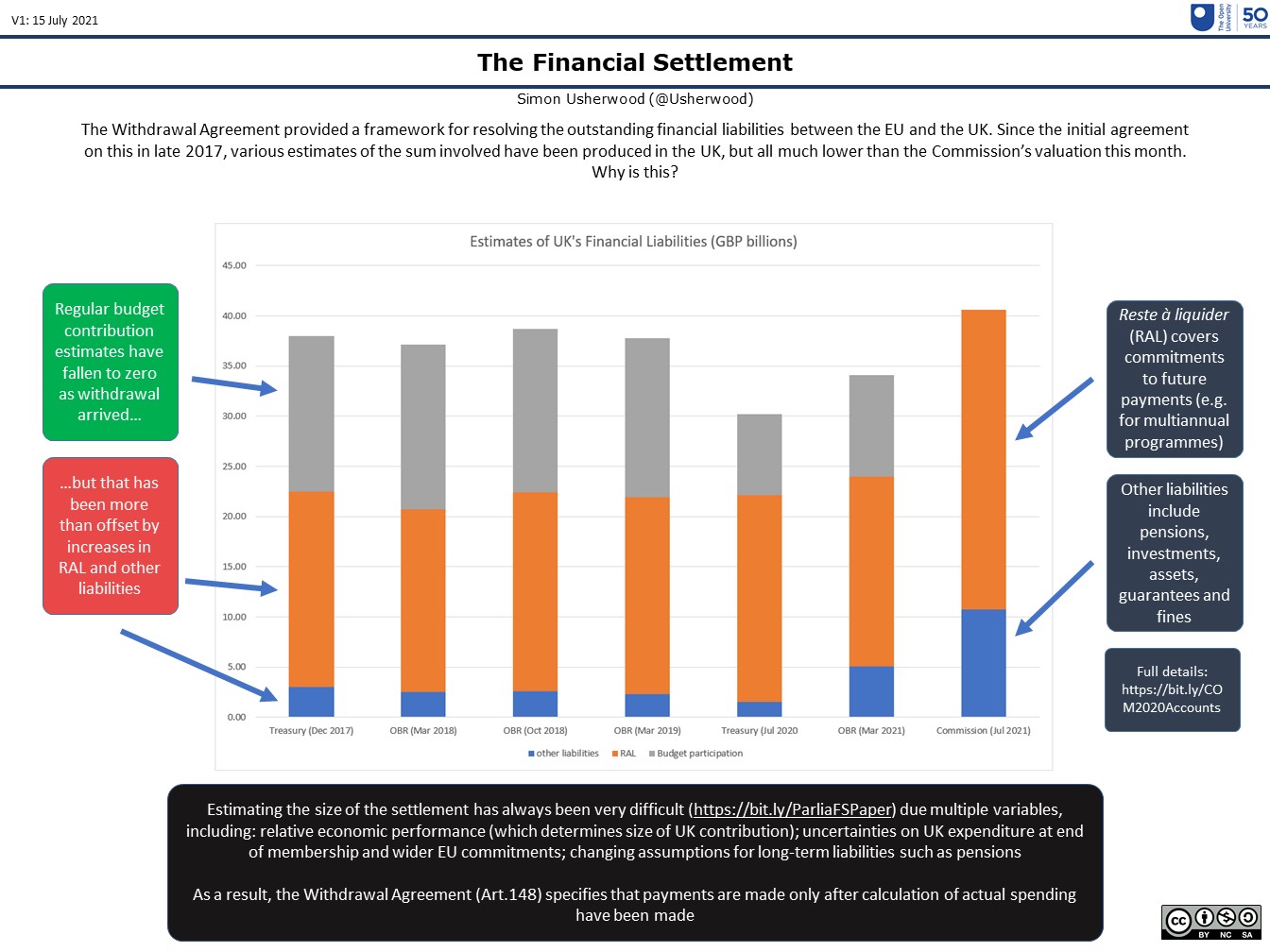This week has seen the full return of the Ireland/Northern Ireland Protocol to political agendas, after a lull during the UK’s party political conference season.
Last night saw the publication of the Commission’s extensive proposals on enabling the implementation of the Protocol, following much consultation both within the EU member states and with Northern Irish stakeholders.
That had been somewhat pre-empted by the Lord Frost’s speech on Tuesday, which were taken as a rejection in principle of those proposals, given the more fundamental problems around the Protocol’s operation.
In particular, Frost spoke of the collapse of Unionist support and of the need to remove the EU’s Court of Justice (CJEU) as the ‘ultimate polic[er]’ of the treaty.
As explained in the graphic below, the CJEU is incorporated into the Withdrawal Agreement in two ways. Temporarily, it discharges all outstanding cases before it, including those brought during transition, and offers a time-limited route for handling Citizens’ Rights cases. Permanently, it has a role to provide definitive rulings on matters of EU law that arise from disputes and from the operation of the Protocol in Northern Ireland (the sovereign bases in Cyprus too, not that this seems to be a live issue).
That permanent role is a function of the basic model of the Protocol itself: Northern Ireland is effectively an extension of the EU’s single market and customs union, and each of those is made up of rules set by the EU. Therefore, to ensure uniform interpretation of those rules (needed to make either element meaningful), you need to have a single ultimate court to decide what’s what.
In short, as David Allen Green rightly notes, if you want to remove the CJEU, then you want to stop Northern Ireland being inside the single market and customs union, which is a fundamentally situation for the region, and one that isn’t compatible with the Good Friday Agreement.
However, the UK seems bent on pushing this point, and Frost once again reminded the EU that it considers it has grounds to invoke Art.16 of the Protocol. I’ll refer you back to previous posts (and podcast) about why this isn’t likely to solve anything.
The second graphic (which you can read in conjunction with this one) works through a related issue, namely how use of Art.16 might lead to other responses.
Route one will be within the Article itself, since the other party is given the right to make appropriate rebalancing measures: these would be not only a prompt response, but would also limit escalation.
But the Article sits under the WA’s dispute settlement mechanism, and there’s a link through to the Trade & Cooperation Agreement, should the matter not be resolved and remedies of the arbitration panel not be applied.
Admittedly, this is a set of very big steps, and slow ones at that, but it’s useful to remember that legally, as well as politically, the Protocol has the potential to rewind the entire system of EU-UK relations. That might serve the agendas of some in London, but it’s hard to see how anything on better terms for the UK might then ensue.
This is then the bigger point from this week’s exercise: things might not be working well, but sitting down and trying to find a collaborative solution might be the least worse option for all involved. Whether the UK climbs down the Commission’s ladder is still unclear, but we should expect much contagion of the relationship if they don’t.












